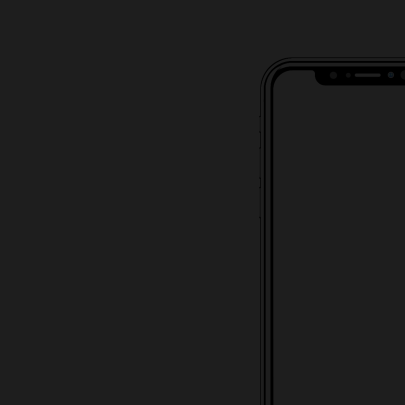Apr 3, 2020 Society
Using a menstrual cup is a simple way to cut waste destined for landfills, though you may need to call a friend to help you get started.
They say a journey of a thousand miles begins with a single step. I just still don’t know why I chose to take mine in the ladies’ toilets at work.
I was, for the first time, attempting to install inside myself a Mooncup: a bendy silicone vessel that is inserted into the vagina to collect menstrual blood. Feeling mounting guilt over my tampons’ monthly contribution to plastic waste, I’d been moved to give it a go by the happy coincidence of a friend’s rave review and an online deal for a two-pack.
Though the Mooncup quickly becomes easy to use, I’d been told there is a knack to it that takes a couple of goes to master. But the opportunity to practise came just once a month, and I was impatient and overconfident.
Your first attempt, I now know, should not be made in one of two toilet cubicles serving a female staff of 50, when your absence from your desk will definitely be noted. It sounds obvious, but this was only dawning on me then, as I realised with horror, that the bloody thing was stuck.
The Mooncup, folded in on itself on entry as instructed, had not unfurled inside of me like a delicate flower as the booklet at my feet had indicated it would. Instead, it seemed, on inquiry, to be on its side, my exploratory finger coming up against a wall of smooth silicon. Nothing to grip. Nothing to push. No way to pull it out.
With mounting panic, I pictured the worst-case scenarios: being discovered in the ladies after a staff-wide search, having to explain the sorry saga through door, my boss herself using a circular saw to break me out of the cubicle. (In my distress, my inability to dislodge the Mooncup had become conflated with my inability to unlock the toilet door.)
My friend once forgot to take out a tampon before sex and had to have it removed in A&E. Would that be where I’d wind up, too? And all for trying to do my bit for the environment?
I had been using tampons since I was 12, making consistent progress towards the total of as many as 14,000 used over a lifetime of menstruation, the vast majority of which ended up in landfills — a steady trickle of waste, leading from me to an already overburdened planet.
The thought had bothered me, as had the accumulative cost of tampons (by rough estimates, nearly NZ $3000 over a lifetime and the faff of having to keep one on your person. I had wished for another way — and my friend Ally had seemed to deliver.
I had known Ally for years. She was one of those conscientious, plugged-in people whose endorsement — whether it be of a GP or a brow product — you knew to act on without hesitation. And Ally had raved about her Mooncup: its ease of use, its convenience. Indeed, most of the product’s astonishing sales growth — 98% in five years — has been through word-of-mouth.
You popped the cup in, let it fill up, took it out and emptied it — sometimes only once a day — then repeat as needed. No more worrying about being caught out without a tampon, she’d said — no more tampons, full stop. You were catching the leak at the source, and the cup was estimated to last a decade. If, of course, I ever managed to get it out.
I silently cursed the corporations whose short-term thinking and single-minded pursuit of profits had passed responsibility for reducing plastic waste onto consumers. And I cursed Ally, too — in real time, over iMessage. This was, after all, exactly the type of emergency that you justified taking your phone into the bathroom with you for.
Fortunately, Ally was also one of those people who texted back immediately. With her direction and emoji of encouragement, I was able to upend the silicone cup into what was clearly its correct position: it was secure and imperceptible.
I returned to my desk unnoticed after what might have passed for an early lunch break, both enormously relieved and quietly triumphant.
Five years and some 60 periods later, it is hard to reconcile my panicked first time using a Mooncup with my effortless command of it now.
Trains, planes, nightclubs, music festivals — no bathroom is a barrier, and the tampons that rolled around at the bottom of every handbag and drawer are long gone.
It is only when another woman asks me for one that I am reminded that not everyone has made the switch — despite my best efforts. Today I am as much of an advocate for the menstrual cup mission as Ally, having helped at least two friends to switch over, and they have had their own converts too.
That is, between us, thousands of tampons already saved from landfills — and what’s more, we’ll probably never have to return to them.
Of course — what with carbon emissions, rising sea levels and entire continents seemingly on fire — even if all the world’s menstruators made the jump to Mooncups, it would not be enough to reverse the harm being done to planet Earth, or even significantly reduce it. That task is also too often framed as the responsibility of individuals when only governments and corporations can effect change on a scale large enough to have any significant impact. But, nonetheless, many of us want to do something rather than nothing, and unlike many superficially eco-friendly measures, switching to a menstrual cup entirely replaces a detrimental activity with a sustainable one — no one is going to be ‘cutting back’ on tampons.
Using a Mooncup (or otherwise making your red flow more green, such as with washable pads) also quickly becomes habitual, far more than remembering your reusable shopping bags or coffee cup every time you leave the house. It is a regular, recurring commitment to doing good — the equivalent of authorising a charity to make a direct debit instead of flicking them the odd $20 whenever you feel flush or guilty.
Now that I have mastered my Mooncup, the memory of those tense 20 minutes in the ladies’ toilets is a reminder that change sometimes requires us to get a little bit uncomfortable, with help from others, and then to pay the favour forward.
But maybe wait until you get home to start.
This piece originally appeared in the March-April 2020 issue of Metro magazine with the headline ‘Pink moon’.






